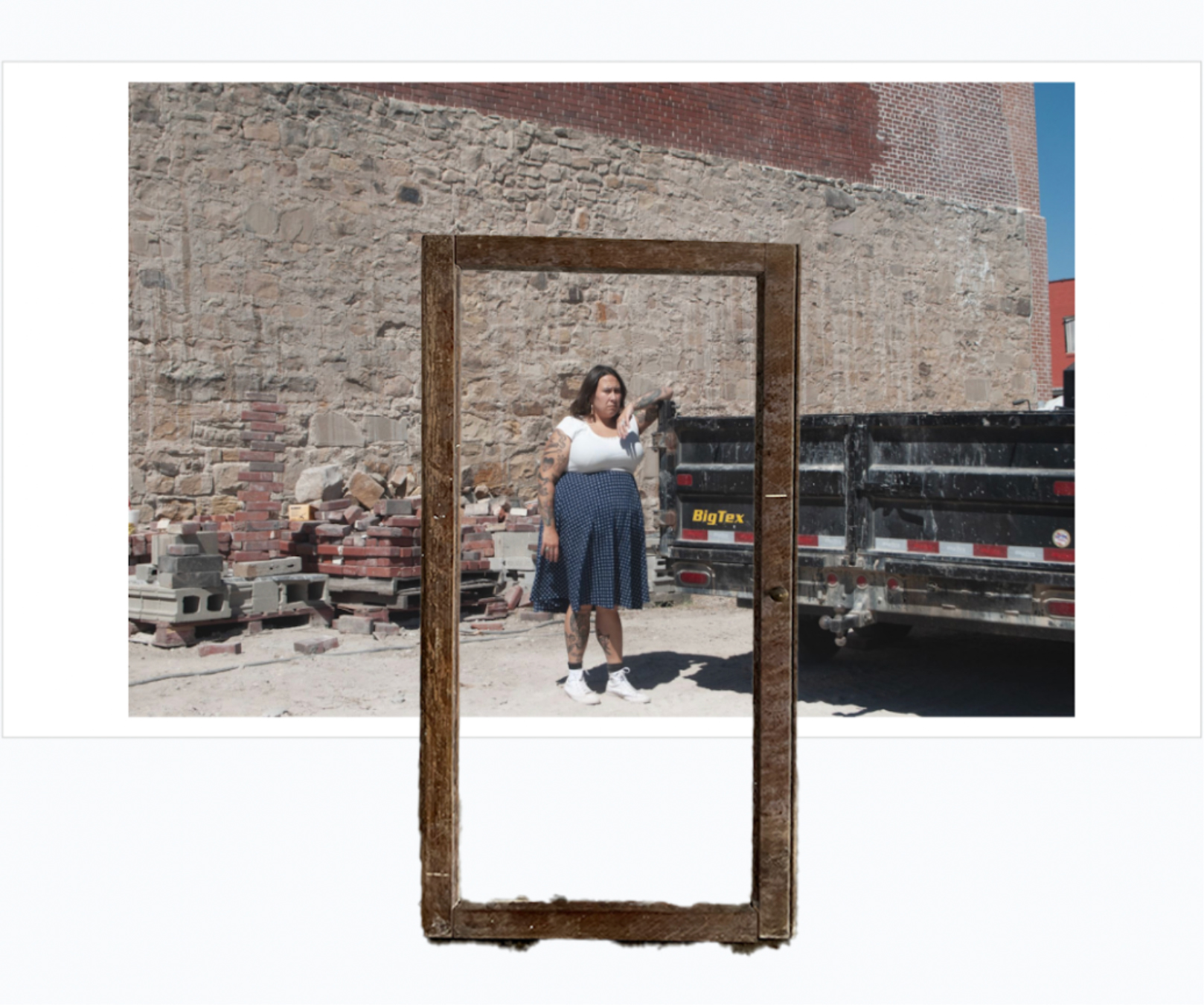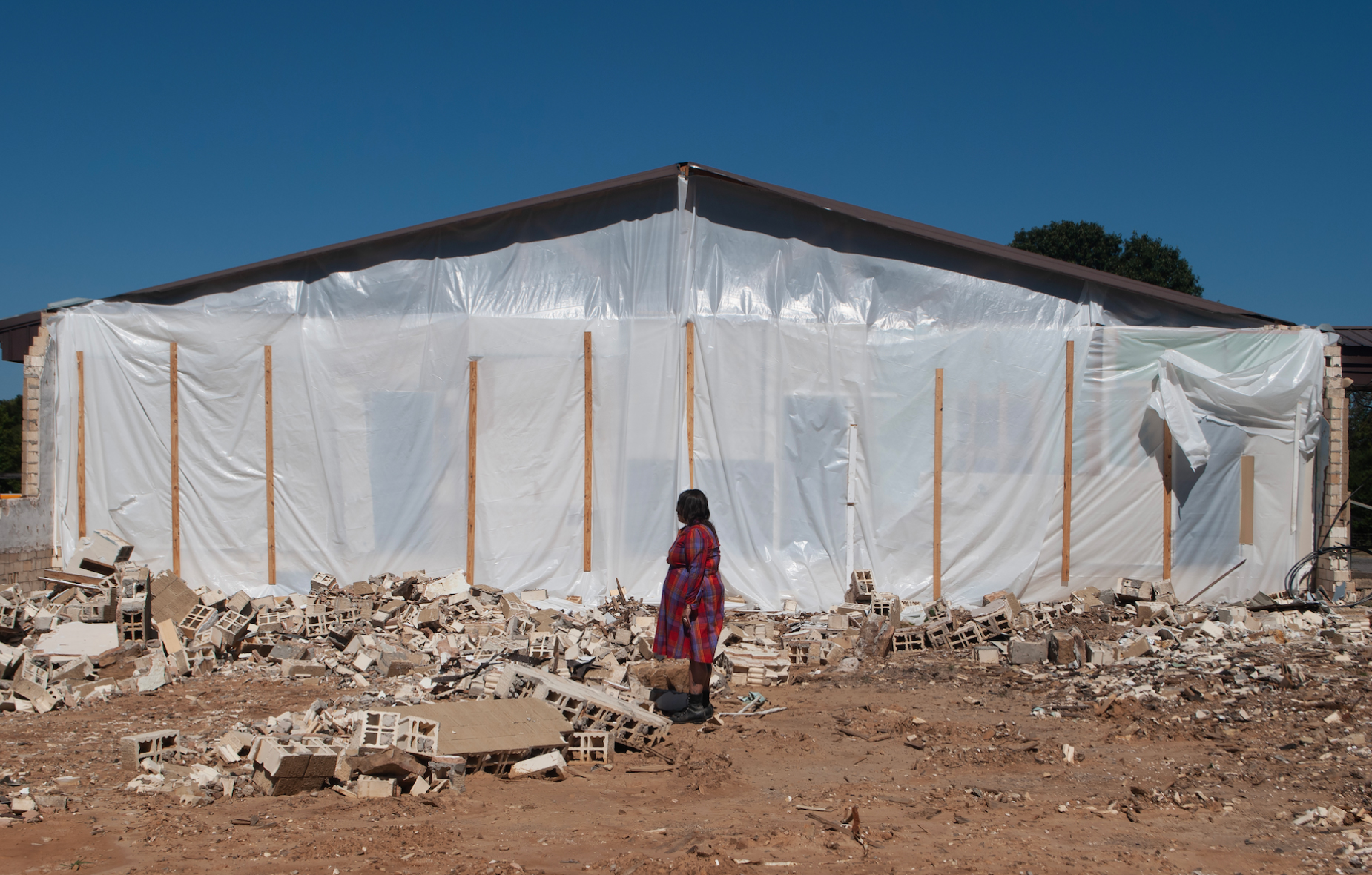Indigenous Ancestry and Memory Come Alive in ‘The Tellings We Keep’
Nov 13, 2025

Tricia Rainwater, ‘Holissa Holitopa (Bible),’ 2021. (Courtesy Tricia Rainwater)
Fifteen years ago, a therapist suggested Tricia Rainwater explore self-portrait photography as a way to process early childhood abuse. What started as a therapeutic practice gradually evolved into the foundation of her work as a multimedia artist — or, as she describes it, “creating an archive of [her] life.”
“I started to really unpack a lot of my own trauma, to look at it and piece it together,” Rainwater said. “I was able to look at a photograph, and be able to take a step back to look at it as an object that I was sorting out. Through that, I was able to process a lot of the pain and move past it, through it.”

Now, Rainwater’s work has come to life in her first solo exhibition, The Tellings We Keep, currently on view in the SF Camerawork gallery at Fort Mason through Nov. 29. The exhibit explores the long, nonlinear process of healing from trauma and the ways that storytelling, memory and identity intertwine in that process.
In many of her photographs, Rainwater’s hands become a central motif, a gesture of reclamation through touch. She holds objects heavy with memory: a Ziploc bag of earth from the Old Military Road trail in Arkansas, where her Native American ancestors walked the Trail of Tears. A Bible with the artist’s hair and razor blades attached. By holding these pieces, she makes the act of reclamation tangible, turning memory, pain and history into something she can grasp.

Rainwater’s exhibit was made possible in part through a Bay Area American Indian Two-Spirits(BAAITS) mini-grant, which supports Indigenous artists advancing Two-Spirit and LQBTQ+ visibility through creative practice. She credits the grant not only for financial support, but for the community support that BAAITS has offered.
Sponsored
“I’ve known of BAAITS for years, and it’s been a really beautiful place for me as an indigequeerperson to go and feel seen,” she says, adding that it’s provided “a feeling of community and family.”
This year’s BAAITS grant also recognized Sage Noelle Tellez Ortiz, who plans to use the grant to host more cultural workshops with an emphasis on uplifting indigenous youth.

Through the lens of being a queer Choctaw artist, Rainwater grounds her work in both personal and communal healing, meaning she doesn’t shy away from difficult subjects in her art.
In a previous large-scale exhibit at ICA San Jose, she created a piece addressing the crisis of missing and murdered Indigenous women, girls, and Two-Spirit people — a reality marked by systemic violence and often ignored by the mainstream.
In The Tellings We Keep, she continues this approach, confronting trauma and injustice directly while shaping the narrative through her own lived experience.
“Stories are too often told by others,” Rainwater said. “Being able to have a solo exhibition is me telling my own story, in the way I want to.”
‘The Tellings We Keep’ runs through Saturday, Nov. 29, at the SF Camerawork gallery at the Fort Mason Center for Arts and Culture. More information here.
Leave a Reply